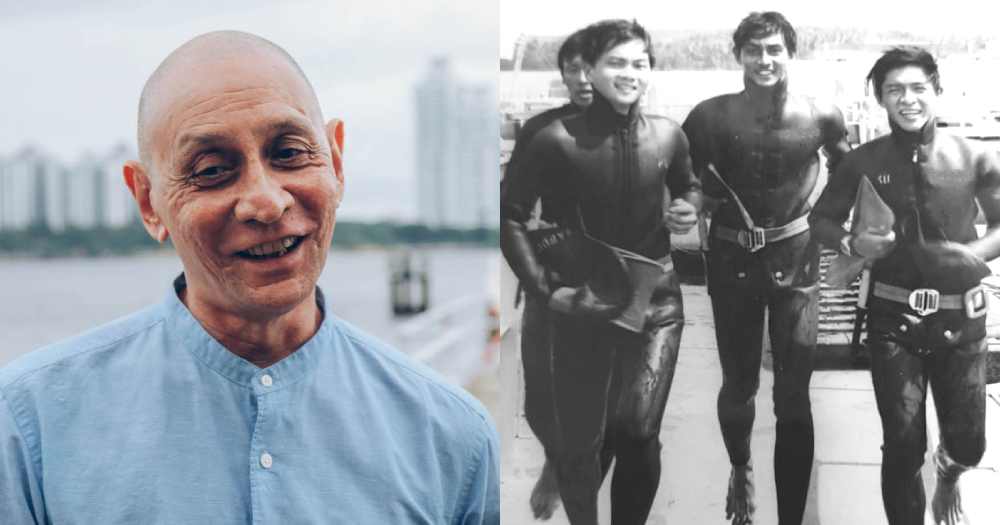In June of 1972, 17-year-old Rodney Hogan arrived at the what was then known as the Singapore Armed Forces (SAF) Diving Centre.
He was there to take part in the selection process for a brand new military unit that would be trained to build up the underwater capabilities of the Singapore Maritime Command, or what is known today as the Republic of Singapore Navy.
Whatever confidence the scrawny teenager had in his own physicality must have vanished when he saw the next applicant arrive — a muscular 21-year-old Bryan Klassen.
“I thought to myself, ‘I’m going to fail this, look at the size of this guy!’” says Hogan, now 64. “I thought that’s it for me, I’m wiping out.”
&t=13s
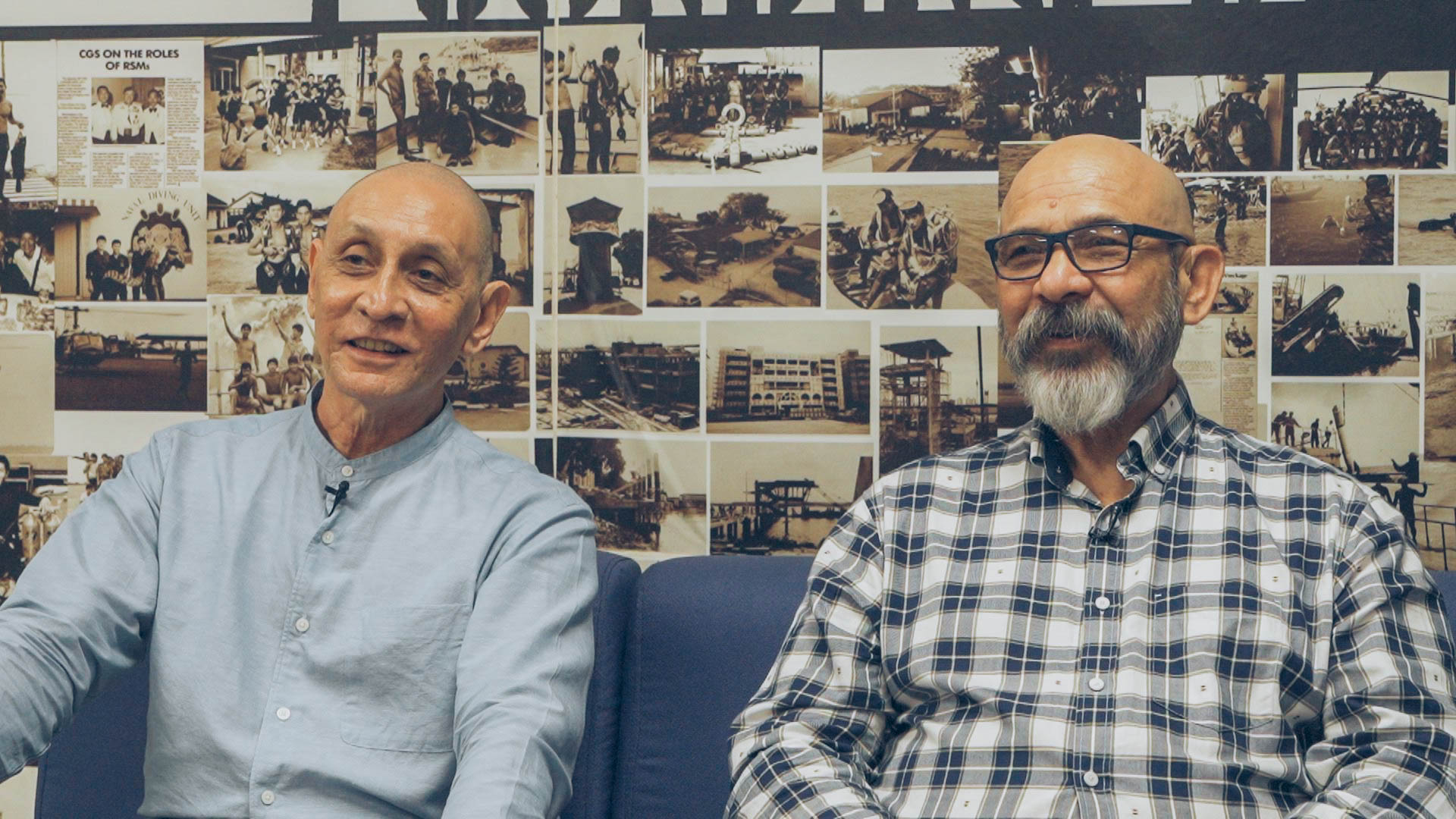 Hogan (L) and Klassen (R). Photo by Zenn Tan.
Hogan (L) and Klassen (R). Photo by Zenn Tan.
Selecting the first batch of trainees
Yet, despite any niggling self-doubt either of them had, a series of medical examinations and aptitude tests would result in neither of them failing.
And fast forward 48 years, they're sitting down with us at the Naval Diving Unit’s lounge, telling us stories of their experiences as two of Singapore's very first batch of naval divers.
That first selection process attracted 200 applicants from various units around the SAF.
They were put through rigorous and detailed medical examinations — checks on their eyes, nasal passages, eardrums, lungs, and a treadmill stress test.
Physical testing involved jumping off a diving tower with scuba gear into a deep pool and performing various drills.
“Not everybody could take it,” says Klassen, 68.
“The medical not many passed. The swimming test not many passed. And that sort of dwindled down (the applicants) to a few, and by the time we started our course there was something like 14 of us left.”
The first leaders of the NDU
They would be led by commanding officer Major Robert Khoo and training officer Lieutenant Victor Rodrigues.
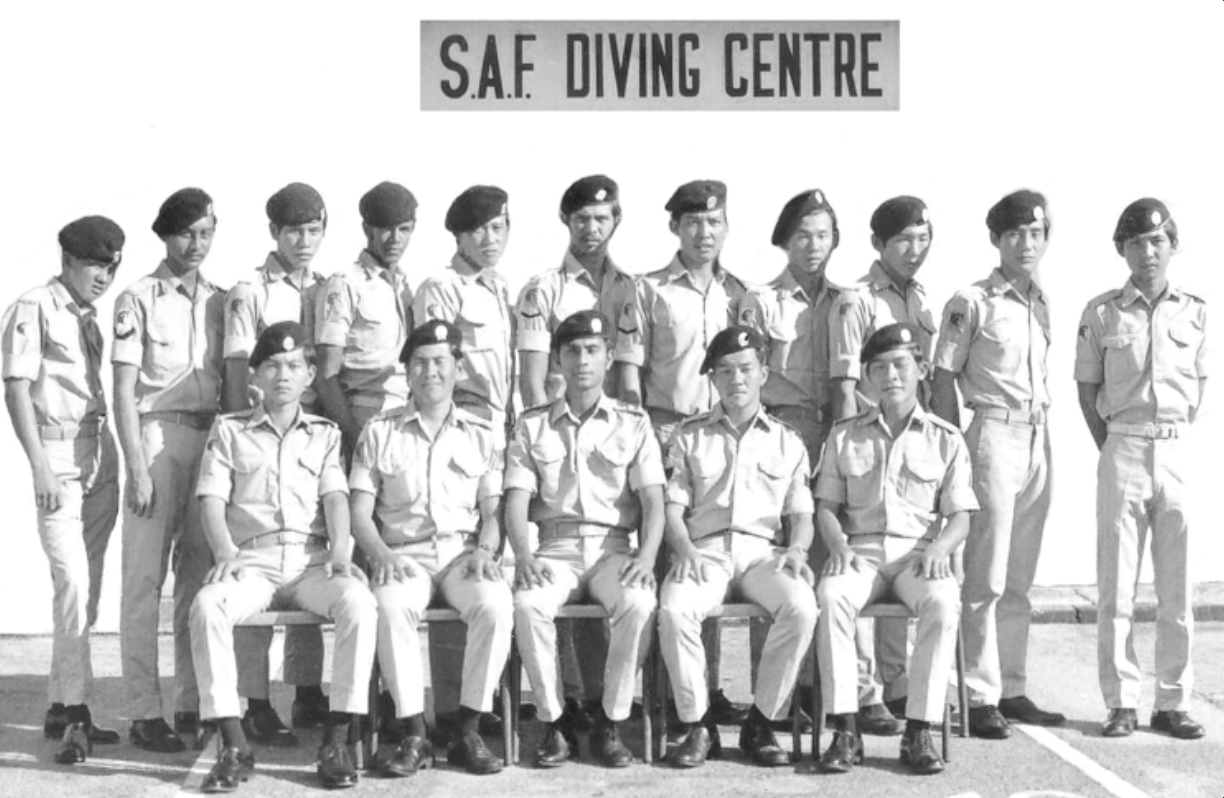 The first batch of trainees to undergo naval diver's training. Hogan is in the back row, second from the left. Klassen is in the back row, sixth from the left. Rodrigues is seated in the centre of the first row. Image from First Navy Diver's website.
The first batch of trainees to undergo naval diver's training. Hogan is in the back row, second from the left. Klassen is in the back row, sixth from the left. Rodrigues is seated in the centre of the first row. Image from First Navy Diver's website.
Khoo, 77, was trained in both the United Kingdom and Australia as a diver in the 1960's and started his military career pre-independence with the Malaysian navy.
Recounting his own training under the British, Khoo tells us "they always say the Asians here are quite dumb".
"Not strong, not educated well, and they live in trees. So we were sent there by the government — we represented the government. But they did not respect us that much, although I topped the course in every subject."
Once he obtained his qualifications there, Khoo was sent for further training in Australia, which he describes as even tougher.
"There was always a superiority complex among them. Their aim was to try and push us to the limit and see us cry or die, whatever it is. None of us did that. We went through, we passed and qualified. Even beat most of the Australians."
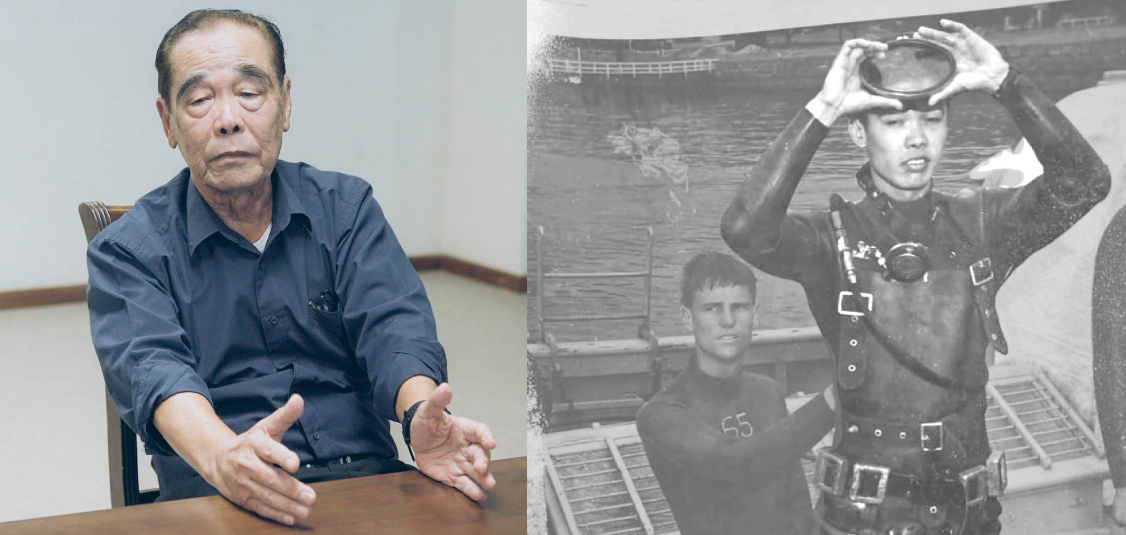 Robert Khoo, now (L) and then (R). Photos by Zenn Tan and courtesy of the First Navy Divers.
Robert Khoo, now (L) and then (R). Photos by Zenn Tan and courtesy of the First Navy Divers.
Rodrigues — who had signed on after being part of the first batch of National Service enlistees — was trained only under the British, though he didn't have it any easier as he participated in their winter diving training course.
"It was cold and wet. It was really tough. Coming from the warm weather, and going there and training to be a diver there was no joke."
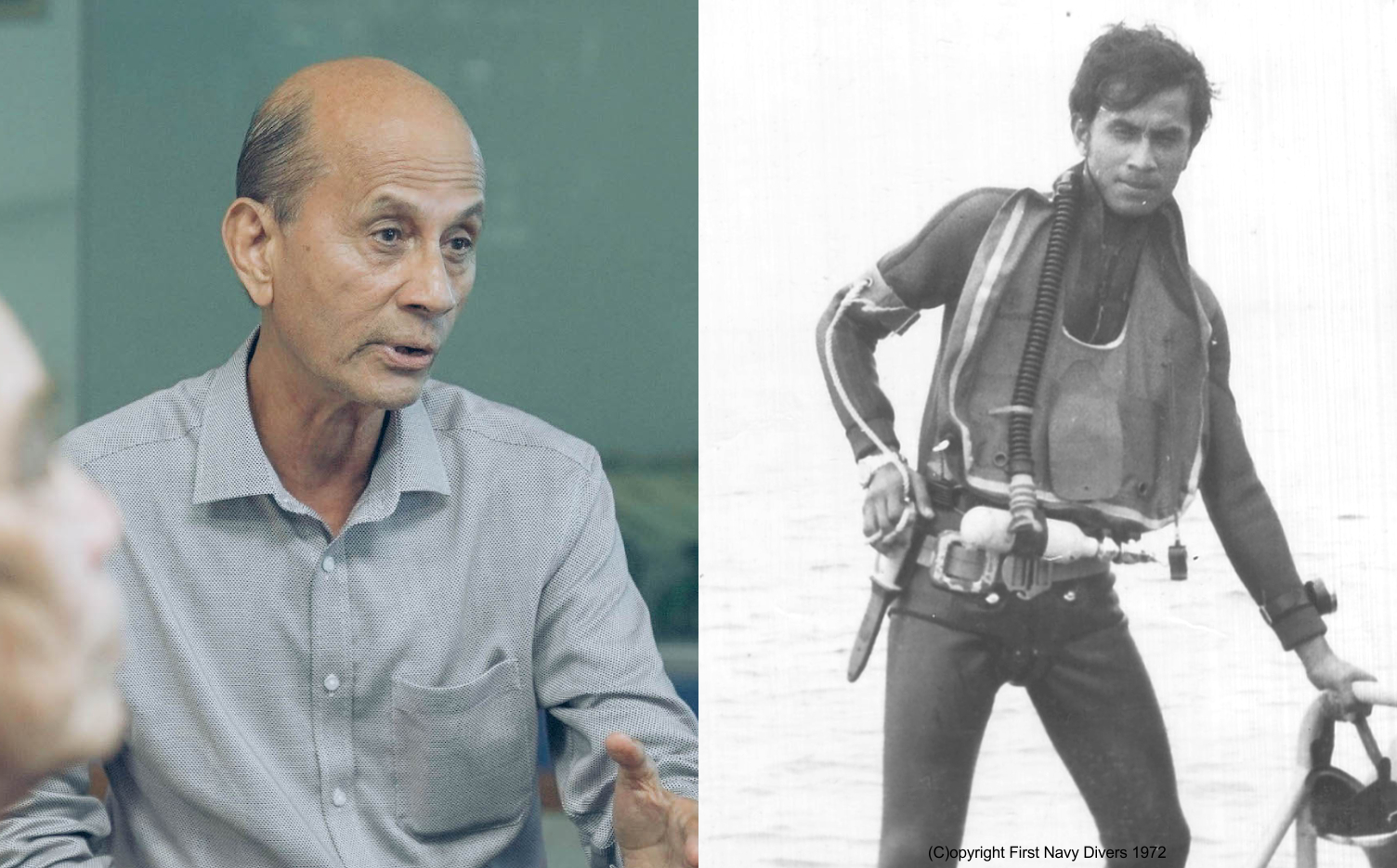 Victor Rodrigues now (L) and then (R). Images by Zenn Tan and courtesy of the First Navy Divers.
Victor Rodrigues now (L) and then (R). Images by Zenn Tan and courtesy of the First Navy Divers.
"You never realise how cold is cold," says Khoo laughing.
He tells us of his own experience diving into a frozen Portsmouth ocean, with a dry suit that left the divers' face and hands exposed.
"Your hands literally freezes almost. And after you come back and wash and get yourself warm, it itches."
"It cuts," agrees Rodrigues, who is now 71.
From trainees to divers
Together, Khoo and Rodrigues are credited with designing the naval divers' first training protocol.
To do that, they adapted a lot of concepts they'd learned training under the British and Australians, localising them for Singapore's unique needs and circumstance.
"The training had to be tough. So I pushed them to the limits (as per) instructions from the commander," says Rodrigues cheekily.
"But I had to be careful, know you, not to overdo it. Because this was something very new. The diving vocation at that time was very, very new. Nobody knew what to do. The first batch is always the toughest batch — a lot of trial and error."
Recalling their days training, Hogan tells that they spent a lot of the time laughing — "the whole thing was just so fluid and free-moving, you know?"
"Now they use the term intelligence, right? Previously our intelligence was going up to the nearest fisherman and saying 'how's the water ah?' That was our intelligence collection yeah? And which way was the current blowing? Put your finger in the air and see which way was the air blowing. You want to know what the visibility was like (under the water)? Go down there and find out then let us know!"
Back then, a typical day of training for the divers involved waking up at 5:30am and "double-timing" down to the sea to swim a circuit — something now referred to as a "sea circuit", and which is still done today:
They would swim up to the first station: a rope climb up a jetty. This was followed by a run to the end of the jetty, where the trainees would jump back into the sea and swim back to the starting point only to repeat the circuit another three to five times, "depending on how the instructors felt".
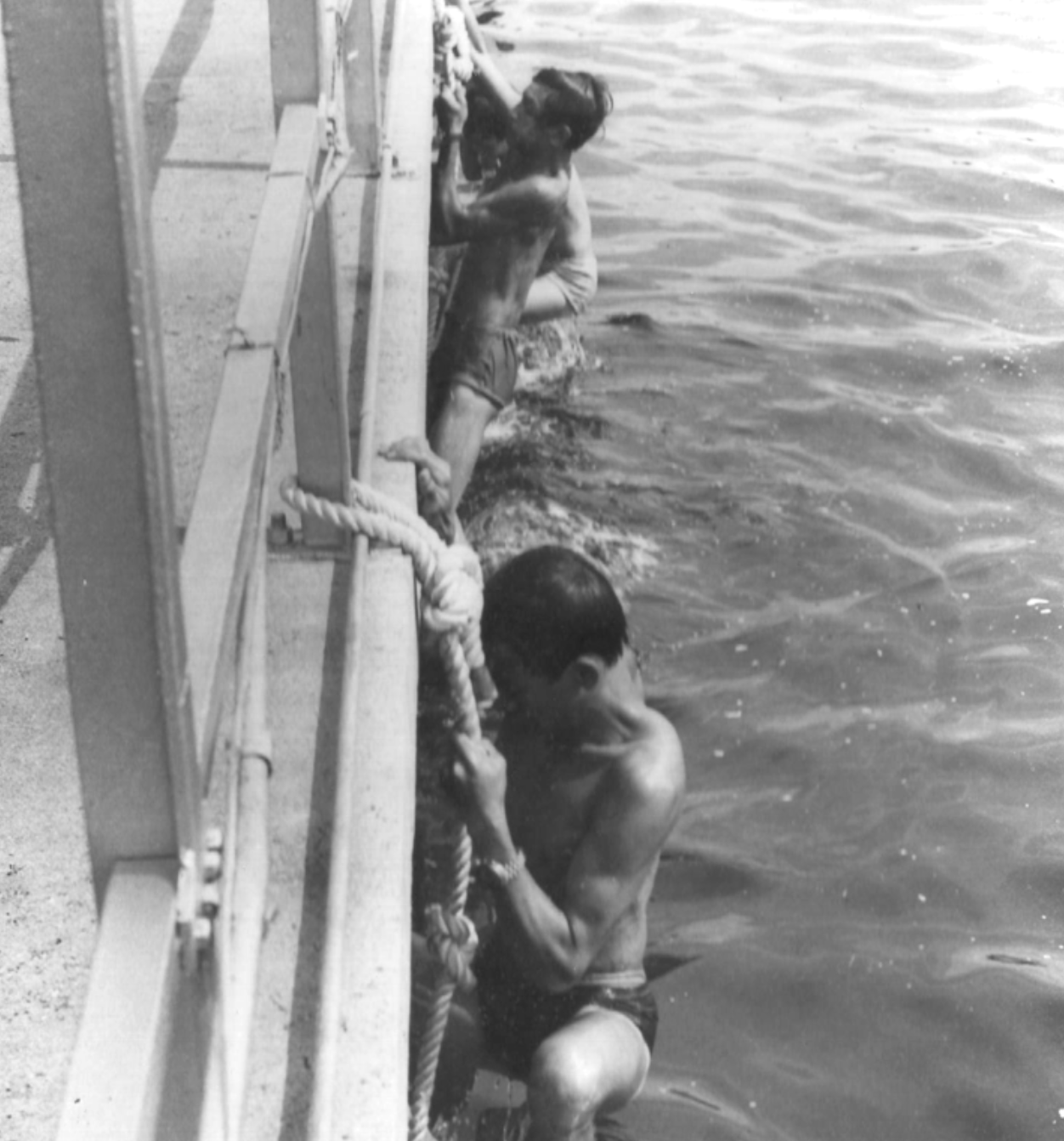 Image from the First Navy Diver's website
Image from the First Navy Diver's website
"It was all about building endurance, strength, overcoming the fear of jumping," says Hogan.
According to Klassen, each day varied in difficulty depending on the tide.
"When the tide was high, then the ropes were shorter. So you could do a quick climb and then continue with the run. But when the tide was (low) the rope was a lot longer, you know?"
"And it applied to the jumps too!" chimes Hogan through laughter.
"When the tide was (low) and you hopped off the platform you'd go 'Yikes! Where'd the water go?'"
After the circuit training was breakfast, before another swim — "was it about four miles?" asks Klassen.
"No, it was about two," says Hogan. "It seemed like four (laughs)."
There was also classroom work to attend to, where the rookies learned about diving physiology and how to deal with various underwater situations.
"In fact, one of our boys had to leave the course. He had burst lungs," says Klassen.
The unfortunate trainee had ascended to the surface too fast while holding his breath — two things you basically should never do when diving.
"It was a shame," recalls Hogan. "He was the best swimmer among us. I mean he was like a torpedo. We couldn't catch him, there was no way."
A particularly frightening training exercise saw them jumping off a helicopter into the waters — something naval diving regulars still do today.
"That was scary," Hogan adds, his eyes widening at the memory. "If you don't land properly, it can be quite painful."
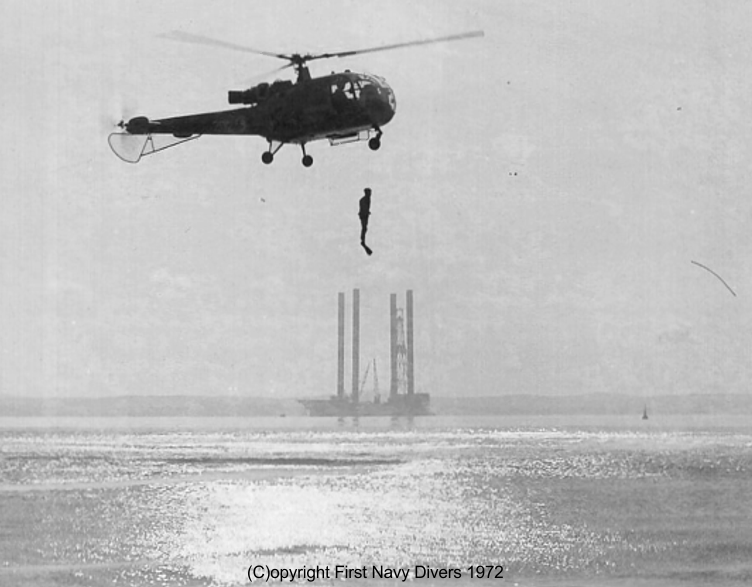 Image courtesy of the First Navy Divers.
Image courtesy of the First Navy Divers.
According to Klassen, jumping off a helicopter with improper technique resulted in both serious and novel consequences.
"We had incidents where guys jumped in and landed on their chest and fractured their ribs. One guy jumped in and his fins came all the way up to his knees. We had to grease his legs and pull the fins off!"
Becoming the first batch of Navy Divers
All this proved that pure physical prowess isn't enough to qualify as a naval diver.
Apart from the luck that was needed to get through training without serious injury, both Hogan and Klassen agree that a certain mental fortitude was what saw the first batch of divers through their training course that — as mentioned above — was designed to push the limits.
"When you had to do 50 push-ups with a double tank on your back, you're about ready to give up," elaborates Klassen.
"About ready to, but you don’t get to that point where you say I’m going to give up," Hogan chimes in.
"You might feel, but you’re never going to verbalise it — not in front of everybody else. It’s very shameful, you know, if you’re going and the guy next to you is going through the same thing, to open your mouth and say 'I can't do this anymore'. It's very shameful. Nobody wants to shame themselves under those conditions.
You really don't care — you'd rather just pass out first. At least you have a reason to carry on after that. But if you open your mouth to say 'No, I can't do this' then you've taken away any reason to carry on."
From the 14 applicants who made it through the selection to be sent on course, another four would drop out. Of the remaining 10 who passed the course, one returned to his former unit to be a commander.
That left nine divers — from an initial pool of 200 applicants — along with Khoo and Rodrigues to form Singapore's pioneering batch of the now-famed Naval Diving Unit (NDU).
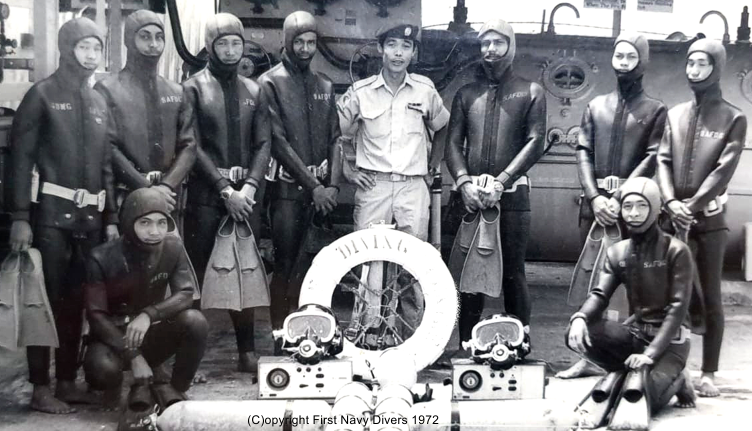 The first batch of Navy Divers. Hogan is standing second from the left. Khoo is the only one not in a wetsuit, with Klassen standing to Khoo's left. Photo courtesy of the First Navy Divers.
The first batch of Navy Divers. Hogan is standing second from the left. Khoo is the only one not in a wetsuit, with Klassen standing to Khoo's left. Photo courtesy of the First Navy Divers.
Operations in unchartered waters
Those first days saw the unit literally diving into metaphorical unchartered waters — "typically when you embark on something, you'd never done it before," says Hogan.
They were sent on a variety of operations including the clearing of sea mines, and retrieval of contraband thrown into the sea by fleeing pirates.
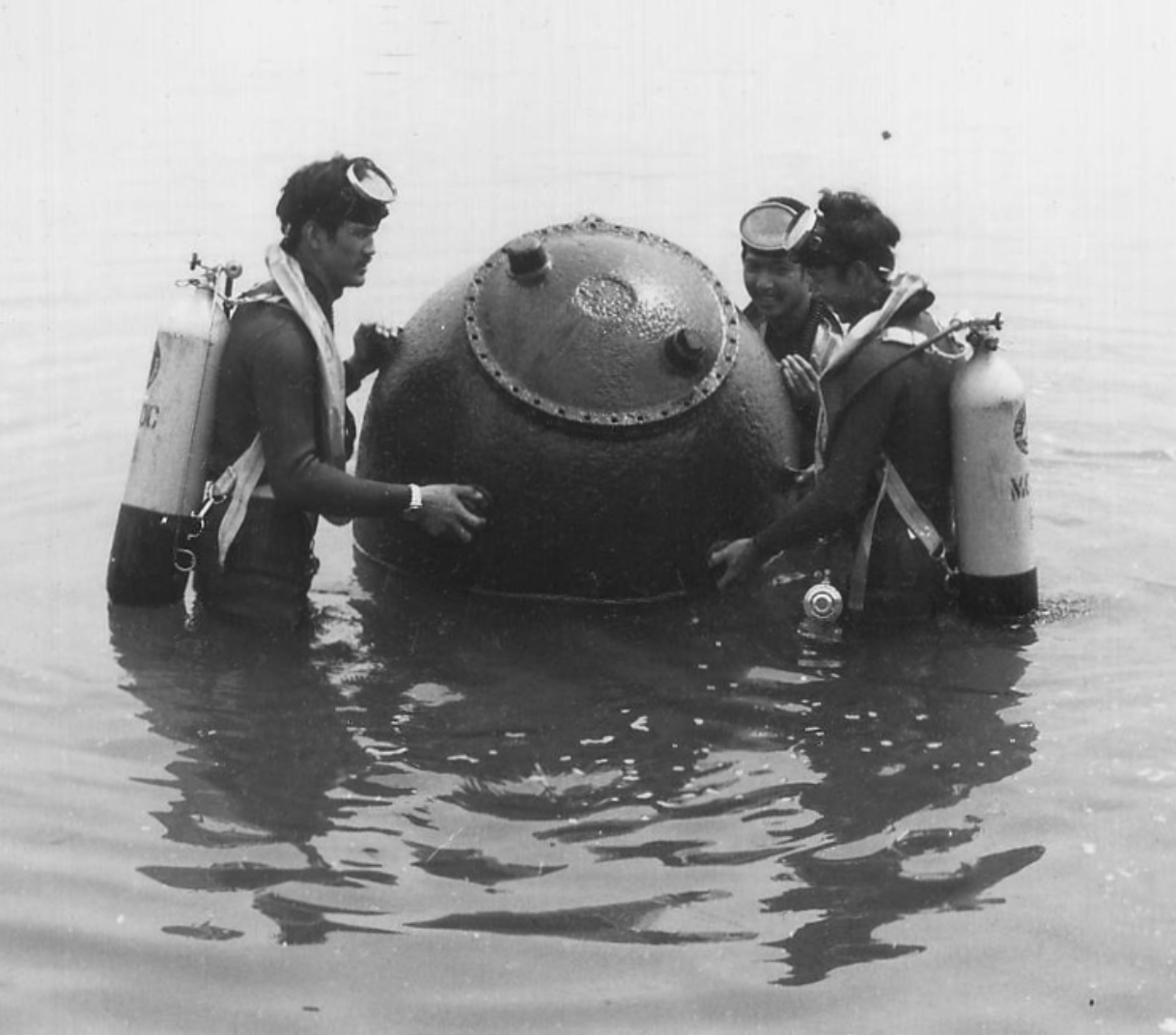 Image from the First Navy Diver's website.
Image from the First Navy Diver's website.
"Mind you there was a lot of head-scratching going on, you know, when we were presented with operations — 'Oh boy, how are we going to do this?'"
"It explains the hairstyle," jokes Hogan, referring to the sheen reflecting off their heads.
However, the operations that seemed to leave the biggest impression were what Klassen called "dead body jobs".
"They call you out, and somebody drowned somewhere. And they'd say 'can you go pick him up'."
Adding to the creep factor of retrieving plunging into the depths in search of a corpse was the fact that the first "dead body job" was conducted at night, in the pitch-black waters of the Telok Ayer Basin.
Klassen explains how they went about it:
"The police wouldn't touch the body. Somehow or other we had to lift it off the water. And when the body drowns in that sense, in the water, they're hard. Almost hard like a piece of wood. So we weren't allowed to use gloves, we had to use our hands because we had to feel.
And when you feel something hard, then you feel whether they had fingers or you move up the other way and you feel whether they had a head. So it was all by feel."
Brotherhood in the midst of danger
While it must have been exciting for the divers to be breaking ground and setting precedents for generations to come, Hogan and Klassen agree that those early days were accompanied by a real sense of danger.
Hogan developed a habit of performing the sign of the cross before jumping in the water — "I don't know if I'm going to come back up!"
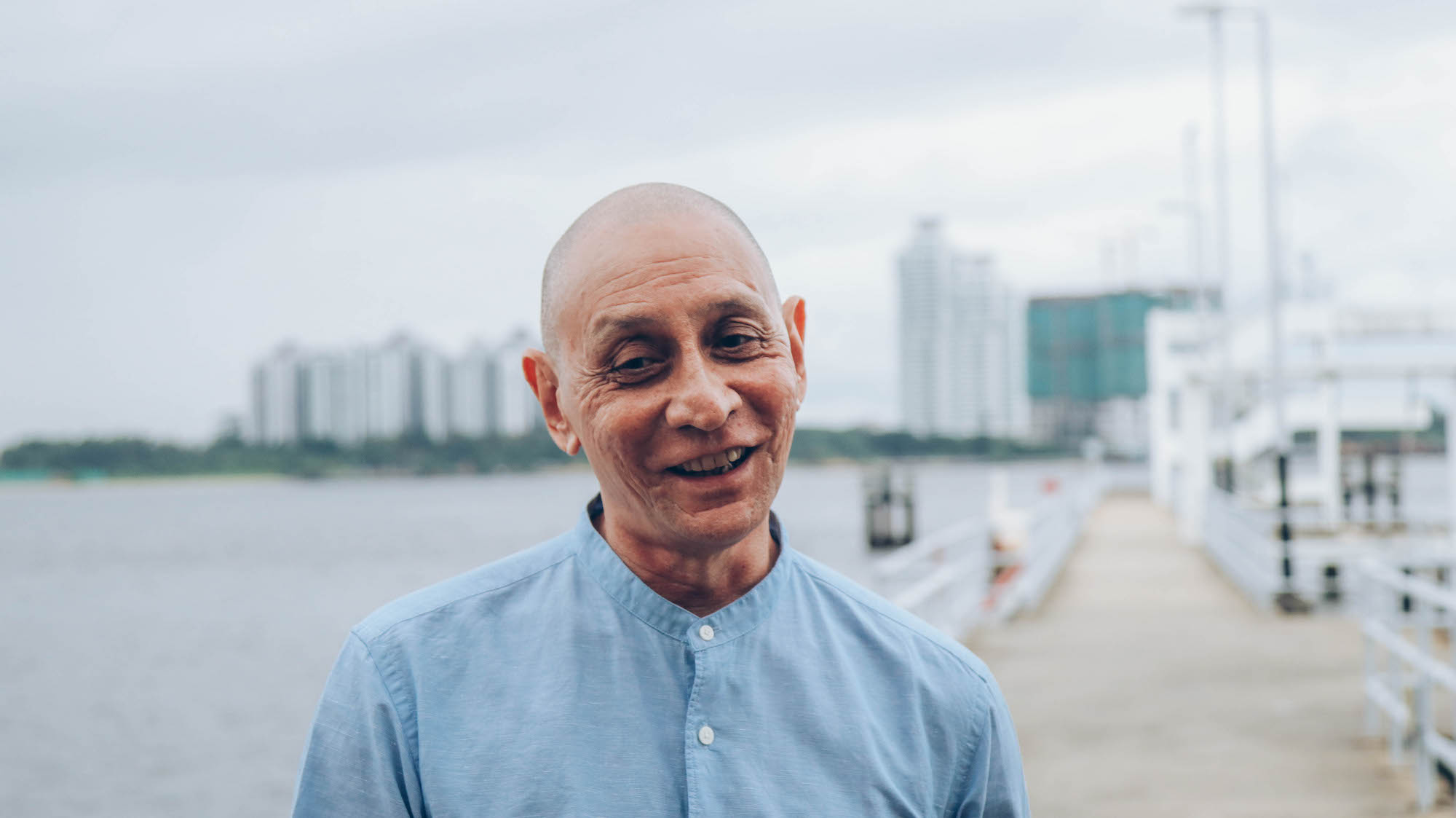 Image by Andrew Koay
Image by Andrew Koay
"That's why you always dive with a buddy," explains Klassen.
"I think that's what pretty much built our camaraderie as a unit...
The whole thing put together, after three months of training — intensive training, hell week and stuff like that — we come out of it, you feel different. You really feel different. One is you feel fit, the other is you just feel that your brother is also still there for me. If I drop something or if I did something I know he’ll pick me up. And he knows I’ll pick him up if he drops."
That sense of togetherness and brotherhood extended to the unit's officers, Khoo and Rodrigues, whom Hogan and Klassen describe as nothing short of supportive.
"Believe it or not, those two officers... Robert and Victor, never once did they raise their voices to us. Not once," says Hogan.
"It was encouragement all the way. Very supportive, very positive."
Far from being distant leaders barking commands, Khoo and Rodrigues got personally involved in the unit's operations.
According to Hogan, this built a strong bond between the officers and the men:
"They always looked after our safety. They always checked our safety stuff themselves.
They were very good like that, that's why we respect them until today. Not once did they ever raise their voice. They were perfect gentlemen."
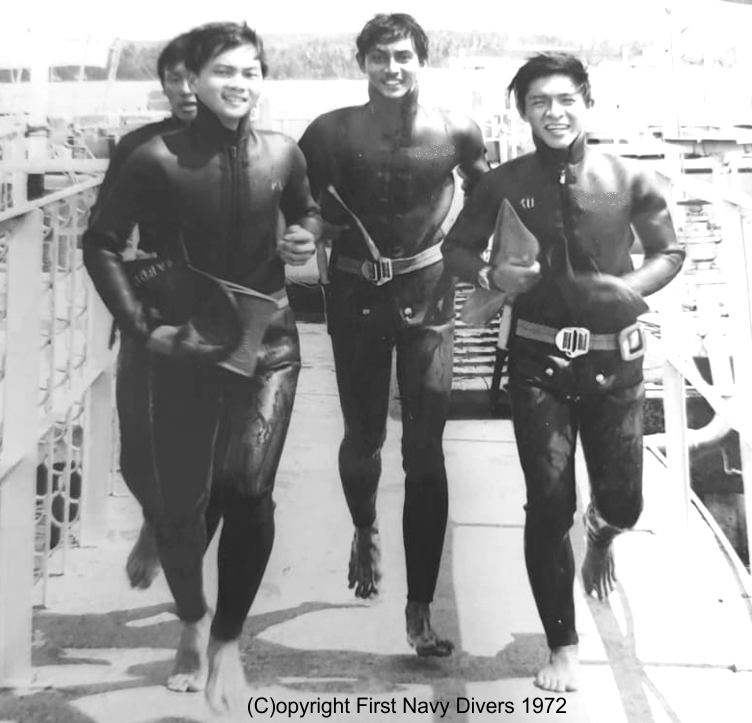 Hogan (centre) training with his fellow divers. Image courtesy of the First Navy Divers.
Hogan (centre) training with his fellow divers. Image courtesy of the First Navy Divers.
"It stays with you for life"
48 years to the day they first came together, this pioneer batch of divers remains a tight unit despite having gone their separate ways.
Khoo went on to retire with the rank of Lieutenant-Colonel and Rodrigues moved on for personal reasons after attaining the rank of Lieutenant.
Hogan spent another 12 years with the navy, attaining the rank of Staff Sergeant, while Klassen, a Corporal, left the navy to work in the private sector as a diver.
"We're still in touch," says Hogan, who details the group's escapades — past and present — on the First Navy Diver's website.
"You know we drifted apart over 40 years and then somebody suggested 'let's come back together and have a drink up' and boom, everybody was there.
As long as you're down there with somebody else, you build that bond and it stays with you for life. Even if you wanted to forget it you couldn't."
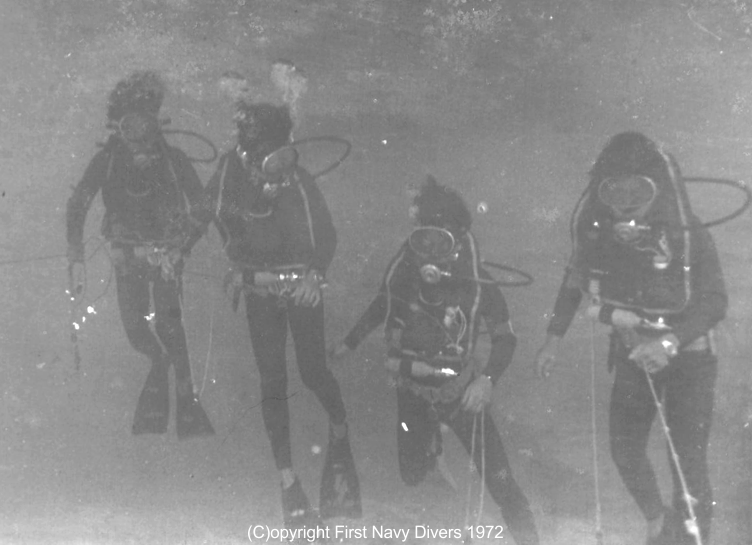 Image courtesy of the First Navy Divers.
Image courtesy of the First Navy Divers.
Top images by Andrew Koay and courtesy of the First Navy Divers
If you like what you read, follow us on Facebook, Instagram, Twitter and Telegram to get the latest updates.
